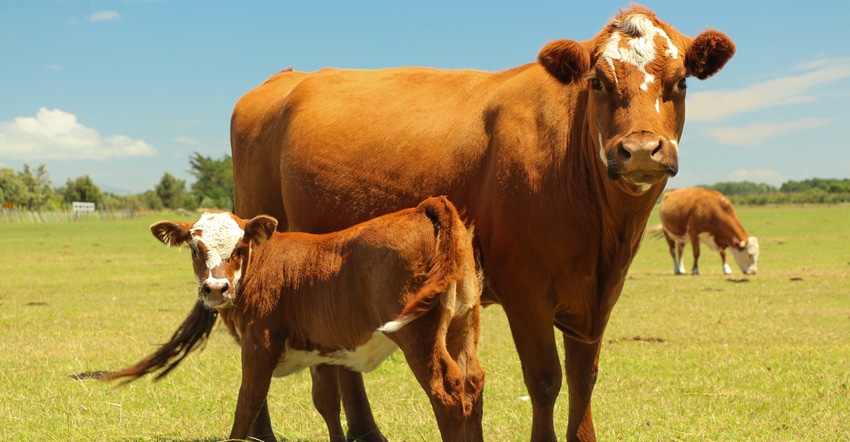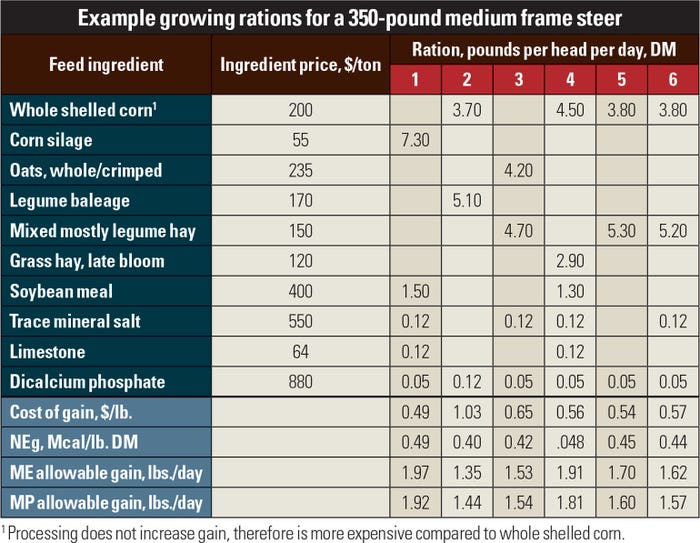
Today’s protein is not your father’s protein, especially when weaning lightweight calves.
Calves that are less than 120 days old should be weaned before severe winter weather sets in. These calves will do better on a grain supplement and forage than on a dam’s milk and hay.
Also, if forage is limited, weaning will reduce cow dry matter intake from 2.5% to 1.8% to 2.0% of her body weight. This is a significant savings in hay.
A variety of feed ingredients can be used to develop a ration for these lightweight calves. The ingredients you choose will depend on what is available and the cost.
First, before working on a ration, have your forages analyzed for nutrient composition. The grains — whole shelled corn, oats and soybean meal — may not vary drastically, so you might get away without evaluating those feedstuffs. Forages, though, most definitely can vary.
Second, expressing protein requirements as crude protein (CP) is no longer adequate as we have learned more about how the rumen functions. Protein requirements, especially for lightweight calves, should be balanced for metabolizable protein (MP) as their level of protein accretion is relatively high compared to heavier cattle.
The limiting factor to gain in heavier cattle is generally energy, not protein. Metabolizable protein consists of degradable and undegradable protein. The rumen-degradable protein is needed to meet the requirements of bacteria that ferment the forage and grain consumed. These bacteria are then digested in the small intestine to supply bacterial protein to meet the animal’s requirements for maintenance and growth.
The rumen-undegradable protein supplements the microbial protein produced to meet the animal’s requirement for maintenance and growth.
The rations in the table below balance both the predicted MP and metabolizable energy (ME) allowable gain using a nutrition software package. Contact your local Cooperative Extension educator or local nutritionist to assist you in ration formulation.
These rations are expressed on a dry matter basis. You will need to correct for moisture to convert to an as-fed basis.
These example rations are balanced for a 350-pound medium frame steer. As the steer gains weight, the ingredient amounts will need to increase accordingly.

Other considerations in weaning light weight calves:
All calves regardless of age or weight should be vaccinated before the stress of weaning. Work with your herd veterinarian to design a program.
While more expensive, a commercially available feed that is highly palatable should be used during the first few weeks of weaning. Intake is crucial during this time of transition.
It is preferable to provide the weaning ration to calves before weaning in order to ease the adjustment to feed.
Fence-line weaning where cows and calves are separated by a strong physical or electrical barrier has been shown to reduce stress.
Place water troughs in the outside perimeter of the weaning pen. Newly weaned calves naturally walk the pen. When they do, finding water will be much easier.
Probably not a problem this year, but dust can aggravate bovine respiratory disease.
Baker is a senior Extension associate in the Cornell Department of Animal Science.
About the Author(s)
You May Also Like






